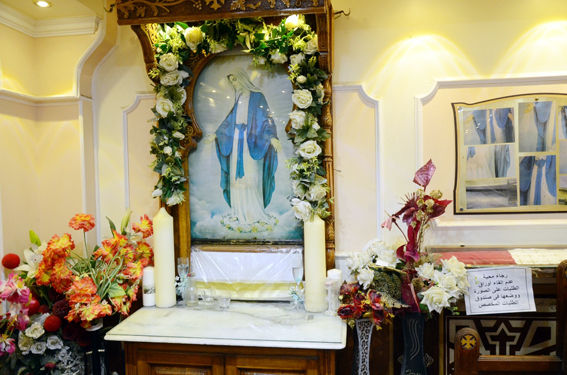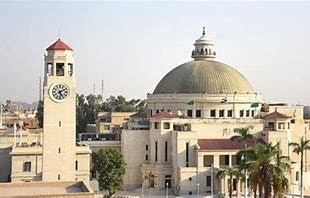It was, unfortunately, a cloudy morning. The overcast weather did not allow an eagerly awaited event to take place at the Grand Egyptian Museum (GEM) on the Pyramids Plateau in Giza. At sunrise on the morning of 21 February, the rays of the rising sun should have entered the foyer of the GEM and travelled through its length to illuminate the face of the majestic statue of the Pharaoh Ramses II, which today occupies the pride of place in the museum’s foyer.
The event replicates the biannual phenomenon that occurs on 22 February and 22 October every year, when the sun rays creep into the rock hewn temple of Abu Simbel in Egypt’s south to illuminate the face of the Pharaoh Ramses the Great, together with the faces of two other deities, at sunrise. The dates 22 February and 22 October commemorate the dates of birth and enthronement of the Pharaoh Ramses II, known as Ramses the Great, who ruled Egypt in 1279-1213 BC and was one of the greatest ever among the pharaohs.
Not exclusive
The sun phenomenon, however, is not exclusive to Abu Simbel temple. According to Sami Sabri, Dean of the Institute of Coptic Studies and Professor of Coptic Architecture, the alignment of sun rays on specific objects at only specific, carefully determined, times of the year is known to occur in 23 ancient Egyptian temples, and also in a number of early Christian churches that stand to this day and are used for worship. Famous among them is the 4th-century church of Mar-Girgis (St George) in the Delta village of Sahragt (also pronounced Sahrajt) al-Kubra, some 78km north of Cairo. The church boasts three altars consecrated in the names of Mar-Girgis, the Holy Virgin, and Michael Archangel. Through small openings in the domes above each, sunlight illuminates each altar only on the feast day of its patron saint. It shines on the altar of the Archangel Michael on his feast day of 19 June, St George’s on 23 July, and the Holy Virgin’s on the Feast of her Assumption on 22 August. In 1984, however, a community center was built next to the church and effectively blocked the sun from reaching the Holy Virgin’s altar.

Another 4th-century church, that of Michael Archangel in the village of Kafr al-Deir, Minya al-Qamh in the East Delta province of Sharqiya, also witnesses this phenomenon twice every year; on 1 May on the Feast of the Martyrdom of Mar-Girgis, and on 19 June on the feast of Michael Archangel.
Dr Sabri points out, however, that it is easier to align the sanctuaries with the sun in the ancient temples, which are typically rectangular and have flat roofs. In case of church domes, it is much more difficult and requires extensive astronomical studies and computations to precisely calculate the alignment, and to do the opening in the dome without compromising its structural soundness.
Date shift
At the temple of Abu Simbel, which was discovered in 1817 by the Italian Giovanni Belzoni, the alignment phenomenon takes place at 5:53am and lasts for about 20 minutes. The sun rays travel some 60 metres, the length of the temple’s hall, and enter the temple’s sanctum, the Holy of Holies to light three of four statues sitting there: the three statues belong to King Ramses II and the deities Amun-Re and Re-Hur-Akhty, leaving the God of Darkness Ptah in the shadow to symbolise his connection to the underworld.

The astronomical phenomenon according to which Abu Simbel Temple was built precisely aligns its entrance and innermost chamber along the path of the sun rays at sunrise on the two dates. The phenomenon has gone on uninterrupted for 3200 years, the only difference being that, until 1968, it used to occur on 21 October and 21 February. In 1968 the temple was transferred uphill in a grand rescue operation through a UNESCO-led USD80 million international project to salvage it from the flooding to be caused in 1970 by the lake reservoir upstream the Aswan High Dam. The temples of Abu Simbel were dismantled and lifted from their original site to the present one where they were reassembled. On UNESCO website, the rescue is dubbed “the greatest archaeological rescue operation of all time.” Abu Simbel remained timelessly unchanged, except for the dates on which the sun penetrates the temple: they shifted from 21 October and 21 February to the following days, the 22nd of the two months.

A first
All these events, however, occur in ancient buildings. But the event at the GEM is the first to take place at a modern construction; it first occurred on 21 February 2022 but could not be observed on 21 February 2023 because of the overcast weather.

Called the ‘world’s largest museum’, the Grand Egyptian Museum was conceived in 2002 as a modern repository for Egypt’s ancient treasures, and the 72,222 sq.m building is currently in the final stages of construction in the shadow of Giza’s iconic pyramids. When the museum is completed in 2023 at a cost of roughly a billion dollars, it will have the capacity to display 100,000 artefacts. Among them will be the Tutankhamen collection and Khufu’s solar boats. The Ramses statue was the first major artefact to enter the permanent collection area of GEM; the story of its transfer to the museum following some 60 years during which it had stood in Cairo’s central railway station square makes for a gripping read reported by Watani:
Watani talked to the people at GEM to find out the story behind the modern-day replication of the ancient marvel. Architect Adel Saad told Watani that the idea was the brainchild of Architect Ahmed Awad. The architects and Egyptologists at GEM made sure that the 83-ton, 11-metre high, 3200-year-old statue of Ramses, sculpted out of Aswan red granite, was placed in the foyer at an angle that would allow its face to receive the sunshine on 21 February and 21 October every year. They then fine-tuned their calculations, determining the height at which the face of Ramses II was, and the angle at which an aperture should be opened for the sun rays to illuminate the face on 21 February. It had to be ensured that nothing stood in the way of the sun shining upon the face of Ramses. This necessitated a modification in the design of the area surrounding the statue.
The first trial took place successfully on 21 February 2021 and, to the thrill of the architects, it again occurred on the same date in 2022. In 2023 however, there was no such luck owing to the cloudy weather in Giza that day.
Intangible heritage
Abdel-Rehim Rihan, member of the Supreme Council of Culture’s History and Antiquities Committee, confirmed that the phenomenon of the alignment of objects with the sun rays on specific dates most famously occurs at the sanctum of Abu Simbel temple south of Aswan, but also at sanctums in other Egyptian temples such as Karnak in Luxor on 21 December; and Qasr Qaroun in Fayoum some 165km southwest Cairo on the same date; and again at altars of a number of old churches on specific dates.

Mr Rihan called for a file to be prepared by Egypt and presented to UNESCO to request that the sun alignment phenomenon be added to the list of intangible heritage.
Obviously, however, as witnessed at GEM, the heritage lives on with the sons of the pharaohs.
Watani International
1 March 2023















